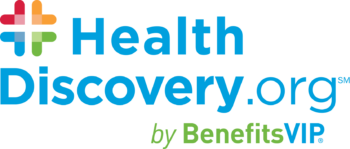Are you one of the 19 million young adults that lack basic healthcare coverage? Young adults have the highest rate of uninsured and the lowest rate of access to insurance from an employer – putting young adults’ health and finances at risk. It can be hard to navigate a new world of insurance on your own or know how to correctly transition off your parent’s plan, so we are here to help.1
Issues of Young Adults Accessing Healthcare
Young adults need insurance just as much as adults. I’m sure you have heard the stereotype that young people are automatically healthy. Well, that is not true. In fact, one in six young adults struggle with a chronic illness like diabetes, cancer or asthma. However, when young adults enter the workforce and accept their first position, it is normally with smaller businesses, entry-level or part-time jobs. A lot of these positions are not offered employer-sponsored health insurance. This presents a challenge to accessing healthcare.2
One option is to remain on your parent’s health insurance plan. The Affordable Care Act allows children to stay on their parent’s plan until they are 26. This helps bridge the gap when they are joining the workforce straight out of college in their early 20s and accepting jobs that may not offer the best, or any, health insurance right away.
However, if your job does offer great health insurance benefits, you may want to switch from your parent’s coverage. You are not required to immediately, which alleviates some stress and gives you more time to decide.
Transitioning Off of Your Parent’s Healthcare
If you are about to turn 26 when starting a new position, it may be smart to just go with your employer’s plan, but if you have some time, it is up to you to decide the best option. Compare plans and consider your own health needs. There are a variety of factors that could help you make this decision, such as the level of coverage and cost. Depending on the plans, which can vary wildly, it may be cheaper to stay on as a dependent than to get single coverage. However, there are also plenty of scenarios when single coverage could be cheaper. That’s why it is always a good idea to at least look at what your employer is offering.
The good news is, turning 26 is considered a qualifying life event, which means your employer must open enrollment to you even if their official open enrollment period has passed.3 This special enrollment period begins 60 days prior to when your coverage would end and ends 60 days after.4 However, it is smart to start thinking about this prior to your birthday dinner celebration.
Keep in mind, there are some specific state laws that vary when you are officially kicked off your parent’s health care. So, I encourage you to look into those.
How Young Adults Can Navigate Their Healthcare (or How You Can Navigate Your New Healthcare)
So, you’ve got your new insurance! What’s next?
The first step would be to learn and understand what your new plan covers. When choosing your plan, you learned your premium or the amount you will pay the insurance company each month for coverage.
But now, you’ll need to know a variety of information, such as which doctors and hospitals are in-network, what your deductible is and more.
You’ll want to select a primary care physician that meets your needs. Whether you want to stay with the same doctor you’ve seen for years, or you just moved to a new city and are asking for recommendations, you need to check if they are in network. Otherwise, the plan may not cover as much of the cost or cover the cost at all.
Your first appointment will likely cost more than you anticipated. Do not be alarmed. You are required to reach your deductible, which is the amount you pay for healthcare expenses before your insurance kicks in. Insurance plans are based on yearly deductible amounts. Typically, a plan with a higher premium will usually have a lower deductible, while a lower premium plan will usually have a higher deductible.
Once you reach that deductible, your appointments and prescriptions will only cost you your copayment, which is a flat fee you pay for healthcare services in addition to what the insurance covers, or coinsurance, which is a percentage of what the plan paid.
Familiarizing yourself with key insurance terms and concepts will help keep these things straight. Remember, your HR or employee advocacy team is always here to answer any questions you may have!
1 Centers for Medicare & Medicaid Services, “Young Adults and the Affordable Care Act”
2 Centers for Medicare & Medicaid Services, “Young Adults and the Affordable Care Act”
3 HealthCare.gov, “Qualifying life event (QLE)”
4 Healthcare Insider, “Turning 26: Health Insurance Guide for Those Aging Off Their Parents’ Plan”














